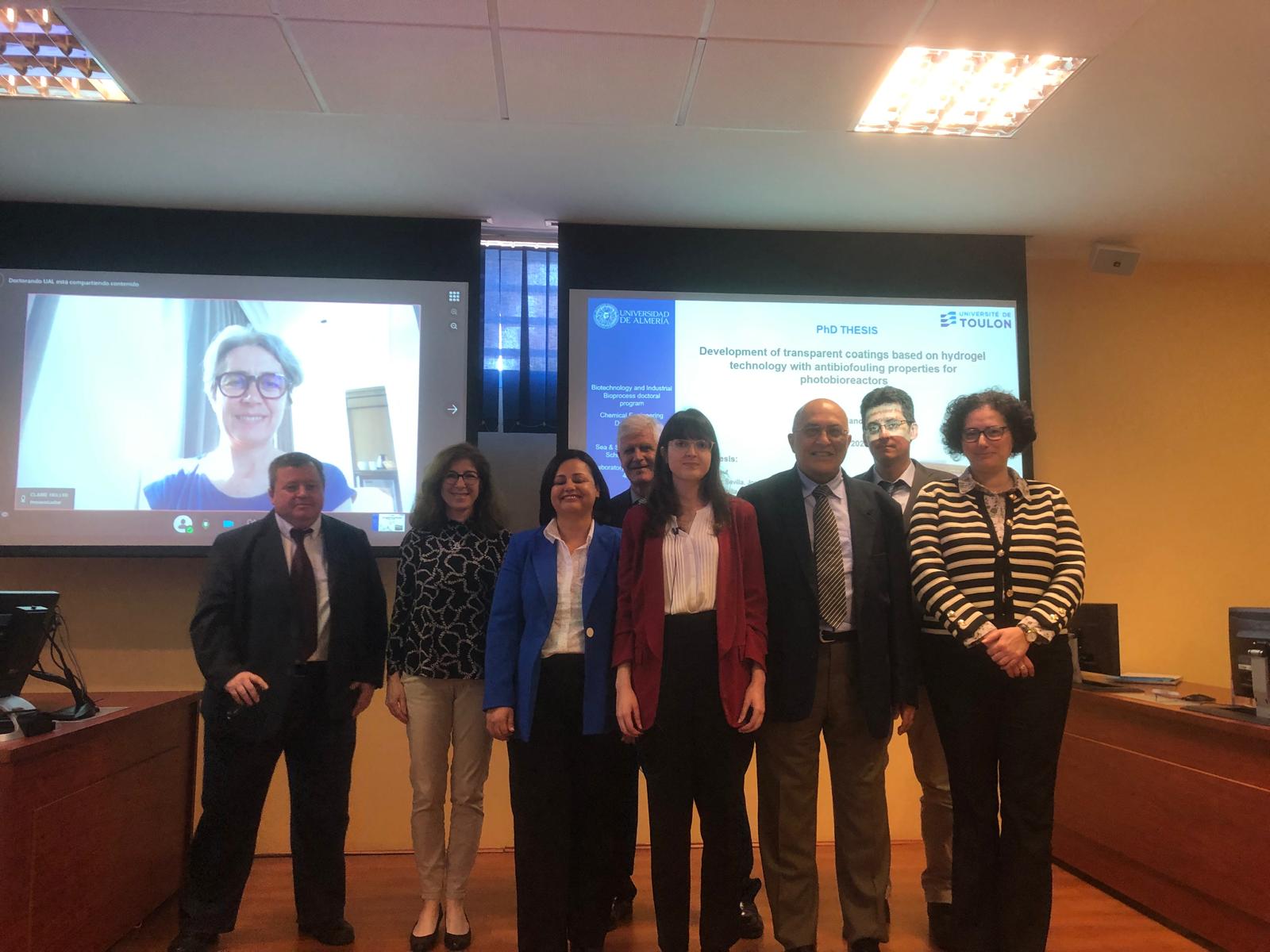PhD thesis defense of Yolanda SORIANO-JEREZ
Yolanda SORIANO-JEREZ, PhD student at MAPIEM lab, under the supervision of:
- Emilio MOLINA GRIMA,
- BRESSY Christine,
- Maria Del Carmen CERÓN GARCIA,
has defended his PhD thesis in Chemistry and Polymers Physico-Chemistry, on the topic:
on the 16th of April 2024, at 10:00 AM.
in University of Alméria -CITE, Spain
before a jury composed of :
- Mme Claire HELLIO, Professeure des universités, Université de Bretagne Occidentale (France), Rapportrice
- Mme Maria Dolores MACIAS SANCHEZ, Maitre de Conférences-HDR, Ecole de Cάdiz (Espagne), Rapportrice
- M. Yusuf CHISTI, Professeur des universités, Université Malaysia Terengganu (Malaisie), Examinateur
- Mme Maria Del Carmen CERÓN GARCIA, Professeure des universités, Université de Alméria (Espagne), co-encadrante
- M. Emilio MOLINA GRIMA, Professeur des universités, Université de Alméria (Espagne), Codirecteur de thèse
- Mme Christine BRESSY, Professeure des universités, Université de Toulon (France), Directrice de thèse
Abstract
Microalgae are of great interest due to their high potential and variety of products. One of the bottlenecks in their production is cell adhesion, or biofouling. To avoid it and achieve efficient closed photobioreactors, it is necessary to develop a new transparent and non-toxic material. Due to the success of fouling release coatings in the naval industry, it was decided to use this type of coatings by applying them to the inner walls of photobioreactors. Seven transparent amphiphilic coatings have been made by adding silicone/polyether (PDMS-PEG) copolymers into a polydimethylsiloxane (PDMS) elastomer matrix. These coatings have an initial surface free energy around the Baier minimum, but, when in contact with water, their surface reorganizes showing a surface energy around the Vogler minimum. The coatings were characterized and N. gaditana cell adhesion was evaluated over 8 months immersed in a 35 L indoor raceway reactor. Those which showed minimal adhesion were those made with the additives DBE-311 and OFX-0400, also corresponding to a higher diffusion rate of the additive to the coating surface, which reduced adhesion by 92%. However, because the latter had lower transparency, the DBE-311 coating was selected to evaluate its effectiveness under external conditions. In this case, the antibiofouling effectiveness of the coating was evaluated with the microalgae N. gaditana and C. sorokiniana under outdoor conditions during summer months, using tubular and flat panel photobioreactors at a pilot plant scale. Although the DBE-311 based coating did not completely prevent biofouling formation, it reduced it by 74% for N. gaditana and 62% for C. sorokiniana in tubular photobioreactors, while in flat panels it reduced it by more than 90% for both microalgae. Therefore, this coating proved to be a good alternative to build efficient closed photobioreactors.
Keywords
Transparent antifouling coating, microalgae, photobioreactors.



